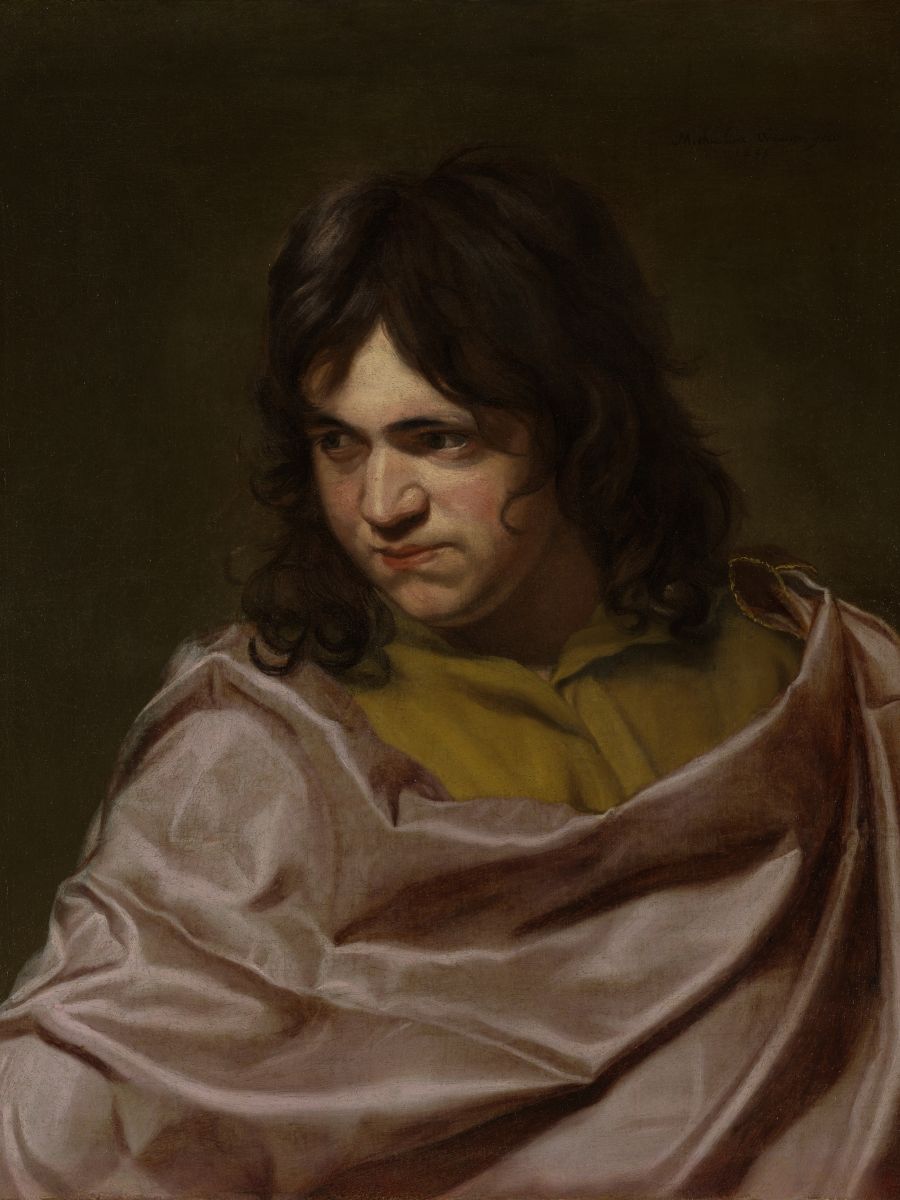Michaelina excels with study head

KMSKA has two works by Michaelina Wautier in its collection. A study head and Two Girls as Saint Agnes and Saint Dorothy. For the exhibition 'Turning Heads' Head Study of a Young Man was restored. An absolute added value for this expo.
Making head studies is a custom adopted by Southern Dutch artists in the 16th and 17th centuries following the Italian example. A model is studied, painted and drawn from all sides in the studio. The gaze is neutral, as is the background. The artist then uses the head in an altarpiece or mythological work where the model does get an appropriate expression and outfit depending on the role he or she may play. The same person may be a weeping Mary Magdalenda in one work and the Roman goddess Minerva in another. These head studies or 'tronies' play an important role in 'Turning Heads'.
Michaelina and 'tronies'
Head Study of a Young Man by Michaelina Wautier is the only work by a female artist in the exhibition 'Turning Heads'.
During the 17th century, female artists were supposed to limit themselves to portraits and still lifes. These genres were less highly regarded than, say, altarpieces. After all, your subject was simply sitting or lying in front of you. No hard work of the imagination was needed. The 'tronie' is therefore an atypical genre for a female artist in the 17th century.
Michaelina Wautier (1614-1685) seems to adhere to that precept in both 'portraits'. Or does she? For the young man is not a 'portrait', but a head study. And that means Michaelina had ambitious plans for it! She must have known this particular studio practice and had access to models like the young man in this study.
We know that Michaelina shared a studio with her brother Charles in Brussels and received commissions for altarpieces and mythological scenes. What we do not know is in which larger painting the young man eventually figured.
Not a 'portrait'
That Head Study of a Young Man is not a traditional portrait is evident form the way the man averts his gaze from the 'camera'. He even looks down. This goes against the rules of portraiture in the 17th century, an age when models usually look straight at you.
Clothes often give a clue as to who we see depicted. Unlike the costumes in portraits, which underline the wealth and prestige of the person portrayed, the young man's outfit seems rather composed of draped pieces of fabric found in a dressing-up case.

The averted gaze, simple clothing and background without detail betray: this is not a portrait but a study.

Using basic pigments yet painting a beautiful pleated trap. Michaelina can do it.

Michaelina's calligraphic signature (lifted).
Signed
Michaelina signed Head Study of a Young Man. This is somewhat strange for a study, which normally ended up as reference material in a personal archive. Presumably, Michaelina found a buyer for the work. Not unthinkable, because in 17th-century Brussels there is a market for this kind of work. Michaelina thus placed her full name on the work in graceful letters, possibly at the buyer's request. And at the same time, Michaelina undeniably states: this is my work.
The recent restoration of this painting makes the signature more clearly visible. The work may be the only painting by a woman in the 'Turning Heads' exhibition, but it is most certainly one with a clear statement.




